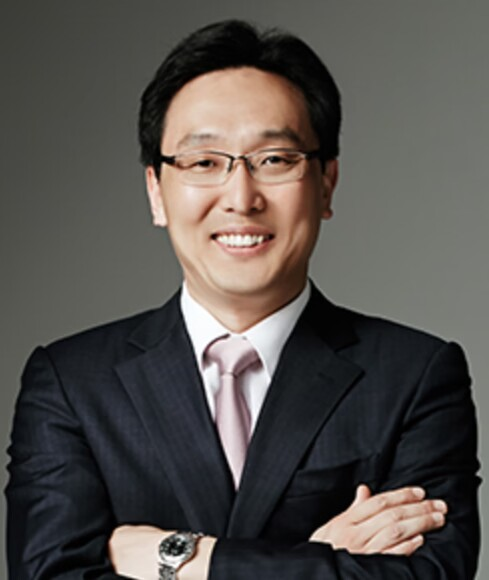Keynote Speakers
Keynote Speakers

Prof. Dr. Ildoo Chung
Pusan National University, Busan, Korea
Biography: Professor Ildoo Chung joined the faculty of the Department of Polymer Science and Engineering at Pusan National University, Korea, in 2005. Prior to that, he completed his postdoctoral training with Professor Jimmy Mays in the Department of Chemistry at the University of Tennessee, USA, and with Professor Dong Xie in the Department of Biomedical Engineering at the University of Alabama at Birmingham, USA. He received his Ph.D. from Pusan National University in 2000. He has served as the editor-in-chief of the Journal of Adhesion and Interface and as a member of the board of directors of the Polymer Society of Korea, the Korea Society of Adhesion and Interface, the Korea Polyurethane Society, and the Asian Cyclodextrin Conference. He has over 130 peer-reviewed publications and over 200 presentations at national and international conferences. His research interests are focused on polymer synthesis, including atom transfer radical polymerization (ATRP) and reversible addition-fragmentation chain transfer (RAFT) polymerization, applied to advanced polymeric biomaterials such as drug delivery systems, hard/soft tissue compatible polymers, photocurable 3D printing polymers, biodegradable polymers, and composite systems.
Speech title "Biodegradable and thermoresponsive hollow porous micro/nanoparticles for sustained drug release"
Abstract-Various types of porous biodegradable polymers based on polycaprolactone (PCL), polylactide (PLA), and polyurethane were synthesized and used as drug delivery vehicles for bupivacaine and carboplatin. Porous biodegradable microspheres were fabricated by successful RAFT polymerization of methyl vinyl ketone (MVK) onto PCL and PLA, which was first synthesized by ring opening polymerization of lactide followed by an oil/water emulsion-evaporation method, then finally photodegradation of PMVK blocks by UV irradiation. Biodegradable porous polyurethane nanoparticles have also been fabricated using water-in-oil-in-water double emulsion and solvent evaporation methods. These nanoparticles are composed of biodegradable and biocompatible polyfumarateurethane (PFU) and L-threonine polyurethane (LTHU), designed for degradation through hydrolysis and enzymatic activity, facilitated by the presence of ester bonds and peptide bonds within the polymer backbone. The morphology of microspheres was spherical with smooth surfaces before UV irradiation. Microspheres fabricated only from PCL homopolymers could also retain their smooth surface after UV irradiation. However, those from PCL-PMVK and PCL-PLA-PMVK block copolymers had rough surfaces and porous structures after UV irradiation due to the photodegradation of PMVK blocks as a porous template. The porosity and shape of the microspheres and shape of microspheres were dependent on the PMVK contents and size of microspheres. In addition, the drug loading, encapsulation efficiency, and drug release profiles, using UV-Vis spectroscopy, showed the highest encapsulation efficiency with 2.5% drug, and sustained release profile.

Prof. Patrick Townsend Valencia
Escuela Superior Politécnica del Litoral, ESPOL, Ecuador
Biography: Patrick Townsend focuses his research on
the development of new viscoelastic and auxetic composite
materials to prevent damage in fiberglass and glass fiber
reinforced plastic (GFRP) vessels caused by the wave impact
phenomenon known as slamming. His work aims to extend the
service life of high-speed vessels by protecting laminates from
microcracks and delaminations. He has conducted studies on the
mechanical behavior of GFRP hull laminates using auxetic sheet
designs to enhance energy dissipation under impact. His research
combines laboratory experiments, 3D printing of
second-generation auxetic components, and comparative mechanical
testing to evaluate the effectiveness of modified specimens. He
has collaborated with institutions such as the Escuela Superior
Politécnica del Litoral (ESPOL) in Ecuador and the Materials
Research Center at the Polytechnic University of Madrid, as well
as with shipyards engaged in the construction of planing hull
vessels.
He has demonstrated that auxetic sheets with an “M”-shaped
geometry are the most effective in absorbing energy under
uniaxial compression, simulating quasi-static impact conditions.
His work has also focused on the detection and mitigation of
debonding—a critical failure mode that can lead to delamination
at the bottom of vessel hulls. To study this, he has designed
specimens modified with viscoelastic cores produced by 3D
printing and compared them to unmodified samples through tensile
and bending tests. The results revealed improved crack
propagation resistance and enhanced stress-strain behavior in
the modified composites. His current publications serve as a
foundation for the redesign of GFRP naval structures, and his
latest advancements will be presented at the ICMFM2026
conference.
Speech title "Effect of the tensile behavior of defects caused by gas bubbles on the repair process of GFRP laminates"
Abstract-This study experimentally analyzes the effect of entrapped gas bubbles in GFRP repairs on naval structures, focusing on a vessel operating in the Galápagos Islands. Specimens are fabricated following the ISO 527-4:2022 standard using hand lay-up techniques on flat molds, incorporating both defect-free and intentionally bubble-induced samples. Uniaxial tensile tests are performed to assess variations in mechanical behavior caused by voids across the repair width. The methodology includes a comparative analysis between unrepaired (original) and repaired zones, allowing the quantification of strength loss due to entrapped air. Given that the hull of a vessel is cyclically subjected to tensile and compressive stresses depending on sea conditions, this testing approach offers a realistic assessment of how repair defects can compromise structural integrity. The results aim to inform best practices in composite repair and highlight the importance of manufacturing quality in restoring mechanical performance.

Prof. Woongchul Choi
Kookmin University, Korea
Biography: Woongchul Choi is a Professor of Automotive Engineering at Kookmin University. He received his Bachelor of Science (Mechanical Engineering) from Seoul National University in 1987 and earned his Master of Science and Ph.D. degree both from the Ohio State University in Columbus, Ohio in 1989 and 1995 respectively. He started his professional career as a founding member of a small high tech venture company specializing in the development of stereoscopic image based flow field measurement system and successfully carried out many research projects with major automotive OEMs. His research interest includes vision based 3-D velocimetry, modeling of advanced vehicles for energy analysis, system integration of advanced vehicles for proof-of-concept, thermal management of energy storage systems, bidirectional interaction between vehicles and electric power grid, strategic placement and operation of charging infra-structure and eco-friendly smart city energy analysis. He has been heavily involved in the development of undergraduate and graduate curricula (BK21+, CK II) through government projects as a department chair. Also, he has carried out various government sponsored and private sector (Samsung Electronics, Samsung Electro-Mechanics, Hyundai Motors, SK) sponsored projects including the development of battery swappable electric bus as a public transportation system, battery pack thermal management system, strategy development of charging infrastructure and more.
Recently, he is actively monitoring the charging behavior of electric vehicle owners in Jeju island, Korea to establish the strategy for smart placement of heavily loaded charging infrastructure called EV Charging Theme Park.
Lastly, but not the least, his recent research interest includes characterization of battery cells, diagnostics and performance evaluation of battery cells and modules, development of super-fast charging algorithm with little damage to battery cells, and more on the development of early detection algorithm for faulty cells inside battery modules and packs for safer EV battery pack management.
He writes articles to promote the better understanding of EV, charging infrastructures, battery technologies and future mobilities for energy independent smart cities.